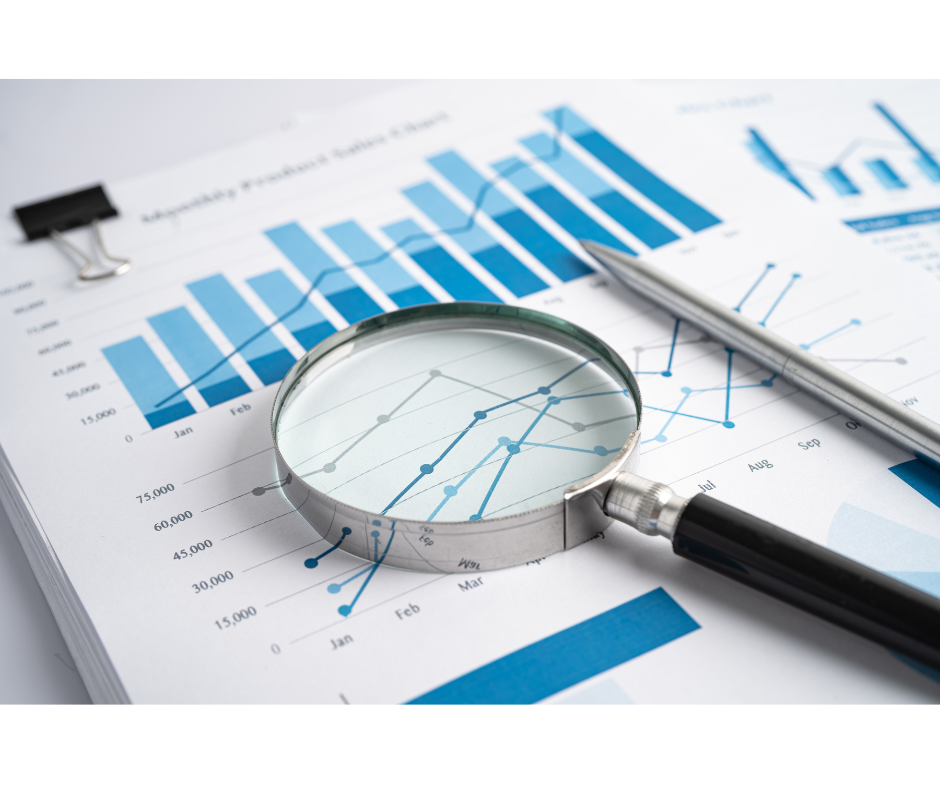
From Vanity to Value: Transforming Reporting into a Strategic Powerhouse
The Data Deluge & The Wisdom Drought
In today’s digital age, we’re awash in data. Every click, every interaction, every transaction generates a torrent of numbers. We spin up dashboards, create impressive charts, and proudly display growth curves. Yet, despite this data deluge, many businesses find themselves starving for wisdom. We’re often left asking: “Everyone loves a good-looking chart, but what does it mean for our business?”
This leads to a common pitfall: the unwitting pursuit of vanity metrics. These are the numbers that look great on a slide, inflate egos, and provide a fleeting sense of accomplishment, but ultimately offer little to no strategic value. They tell you what happened in a superficial way, but not why it happened, or more importantly, what to do about it.
The core argument of this post is clear: Reporting’s true power lies not in passively tracking surface-level numbers, but in its ability to inform and drive strategy. It should be an active engine that fuels decision-making, allocates resources effectively, and ultimately steers your business towards sustainable growth.
By the end of this article, you’ll gain a clear understanding of the crucial difference between vanity and strategic reporting, why this distinction matters deeply for your business, and how you can fundamentally shift your reporting focus to unlock real value.
The Seduction of Vanity Metrics: Why We Fall for Them (And Why They Hurt Us)
Before we can build truly strategic reporting, we must first understand the allure—and danger—of vanity metrics.
A. What are Vanity Metrics?
Definition: Vanity metrics are measurements that are easy to collect, look impressive on the surface, and often inflate a sense of success, but do not correlate with actual business outcomes or strategic goals. They rarely lead to actionable insights.
Common Examples:
Website page views (without context): Millions of views sound great, but how many converted? Where did they come from?
Social media likes/followers: Do these translate into leads, sales, or customer loyalty?
Number of app downloads: Are users actively engaging with the app, or is it just sitting on their phone?
Email open rates (in isolation): An email was opened, but did the recipient click through? Did it lead to a conversion?
B. Why Are They So Tempting?
Ego Boost: They make us (and our teams, and our bosses) feel good. A rising line on a chart, regardless of what it truly represents, feels like progress.
Easy to Measure and Present: Tools often highlight these metrics by default because they’re simple to track and display. This simplicity can be deceptive.
Often Requested: Stakeholders, unaware of their limitations, might specifically ask for these metrics because they seem intuitive or are commonly cited in industry buzz.
C. The Dangers of Relying on Vanity Metrics:
Misleading Picture of Performance: They create a false sense of success or failure, leading to misguided celebrations or unnecessary panic.
Wasted Resources: Time, budget, and effort are inadvertently spent optimizing for the wrong things, chasing numbers that don’t impact the bottom line.
Strategic Misdirection: Businesses can be led down unproductive paths, investing in activities that yield impressive-looking reports but fail to move actual strategic levers.
Inability to Diagnose Real Problems or Identify Real Opportunities: If you’re tracking page views instead of conversion rates, you won’t know why visitors aren’t buying, or how to encourage them to do so.

Strategic Reporting: The Engine of Growth & Informed Decisions
If vanity metrics are the smoke and mirrors, strategic reporting is the clear lens that shows you exactly what’s happening and what you need to do about it.
A. What is Strategic Reporting?
Definition: Strategic reporting focuses on Key Performance Indicators (KPIs) that are directly tied to defined business objectives and overarching strategic goals. It’s not just about what happened, but why it matters.
Focus on “So What?”: Every metric presented in a strategic report should prompt a question about its implications for your strategy. “Our conversion rate dropped by 2%. So what? What does that tell us about our funnel, and what should we change?”
Emphasis on actionable insights, trends, and context: Strategic reports tell a story, highlight patterns, provide comparisons, and ultimately, suggest directions for action.
B. Characteristics of Strategic Metrics (vs. Vanity Metrics):
Actionable: They tell you what to do, what to investigate further, or what decision needs to be made.
Correlated to Outcomes: They are directly linked to tangible business outcomes like revenue, profitability, customer acquisition, customer satisfaction, operational efficiency, or market share.
Contextualized: Numbers are rarely useful in isolation. Strategic metrics are compared against benchmarks (industry averages), historical data (Year-over-Year, Month-over-Month), or segmented by relevant categories (e.g., by marketing channel, customer demographic, product line).
C. Examples of Strategic Metrics (vary by business goal): These metrics offer deep insights into performance and directly inform strategic adjustments:
Customer Acquisition Cost (CAC): The total cost of sales and marketing efforts required to acquire a new customer.
Customer Lifetime Value (CLV): The predicted total revenue that a business can expect to earn from a customer throughout their relationship.
Conversion Rates: From visitor-to-lead, lead-to-opportunity, opportunity-to-customer. These measure the effectiveness of your funnels.
Churn Rate: The rate at which customers stop doing business with you.
Average Revenue Per User (ARPU): The revenue generated per user or customer.
Sales Cycle Length: The average time it takes for a deal to close from initial contact.
Net Promoter Score (NPS) or Customer Satisfaction (CSAT): Key indicators of customer loyalty and happiness.

Bridging the Gap: How to Make Your Reporting Drive Strategy
Shifting from vanity to strategic reporting requires a deliberate approach. It’s about changing your mindset and your processes.
A. Start with Strategy, Not Data:
Before you even think about which dashboards to build or what data to pull, clearly define your business objectives and goals. What are you trying to achieve as a company?
What does success look like for each objective? What specific questions do you need answered to make progress toward those goals?
B. Identify True KPIs:
For each defined objective, determine the 1-3 Key Performance Indicators (KPIs) that will genuinely indicate progress toward that goal. Resist the urge to track everything.
Involve key stakeholders (sales, marketing, product, finance) in defining these KPIs to ensure alignment and buy-in.
C. Ask “Why?” and “So What?”:
Continuously question the relevance of every metric on your reports. For each number, ask: “Why is this important?” and “So what if this number changes? What decision does it inform? What action will we take?” If you can’t answer, it’s likely a vanity metric.
D. Provide Context & Segmentation:
Don’t just report numbers in isolation. Show trends over time (Year-over-Year, Month-over-Month), comparisons against benchmarks or goals, and segment your data (e.g., by marketing channel, demographic, product line, sales territory) to uncover deeper, more actionable insights.
E. Focus on Leading Indicators, Not Just Lagging:
Lagging indicators (e.g., quarterly revenue, annual churn) tell you what happened in the past. They’re important for understanding results but don’t allow for proactive intervention.
Leading indicators (e.g., sales pipeline growth, website engagement from qualified leads, demo requests, customer service response times) can predict future outcomes and allow you to make proactive adjustments to your strategy before it’s too late.
F. Regular Review and Iteration:
Reporting is not static. Your business goals evolve, your market changes, and your strategy adapts. Therefore, your reporting should evolve too.
Schedule regular meetings dedicated solely to discussing reports and their strategic implications, not just presenting numbers. What did we learn? What’s our next step?
G. Foster a Data-Driven Culture:
Encourage critical thinking and a healthy skepticism about data across the organization.
Make strategic reports accessible, understandable, and actionable for all relevant teams. Promote continuous learning and experimentation based on data.
The Transformative Impact: Benefits of Strategic Reporting
When you make the shift to strategic reporting, the benefits ripple across your entire organization, driving real, measurable impact.
A. Improved Decision-Making: Your decisions become based on real insights derived from actionable data, replacing gut feelings or misleading information.
B. Enhanced ROI: Resources (time, money, effort) are allocated to activities that demonstrably move the needle on your strategic goals, leading to better returns on your investments.
C. Increased Accountability & Alignment: With clear KPIs linked to strategic goals, teams and individuals have a better understanding of how their actions contribute to the bigger picture, fostering greater accountability and alignment.
D. Proactive Problem Solving & Opportunity Seizing: By tracking leading indicators and understanding contextual trends, you can identify issues earlier and seize emerging opportunities faster than your competitors.
E. Sustainable Growth: Building a business based on solid data foundations and real performance indicators creates a more stable, predictable, and sustainable path to long-term growth.

From Data Points to Strategic Direction
In the age of abundant information, the true competitive advantage lies not in having data, but in your ability to extract meaningful insights that drive your business forward. The distinction between vanity and strategic reporting is paramount. While vanity metrics offer a comforting illusion of progress, strategic reporting provides the clarity, context, and direction necessary to transform raw data points into actionable strategy.
The challenge now is to audit your current reporting practices. Are you merely counting what’s easy to count, or are you measuring what truly matters?
Ready to transform your reporting from a passive dashboard into an active strategic powerhouse?
At Mobius NEXT, we specialize in helping businesses define, implement, and leverage strategic reporting frameworks. Whether you need assistance identifying your true KPIs, building insightful dashboards, or fostering a data-driven culture, our experts can guide you.
What is ONE thing you can do today to make your reporting more strategic? Next time you look at a report, ask “So what?” for every metric.
Let's solve your toughest reporting challenges. Connect with our data strategy experts!
Resources:
HubSpot Blog: What are Vanity Metrics?
Google Analytics Help: About Key Performance Indicators (KPIs)
Harvard Business Review (HBR)
Link (General HBR Search): https://hbr.org/search?term=KPIs+performance+measurement



